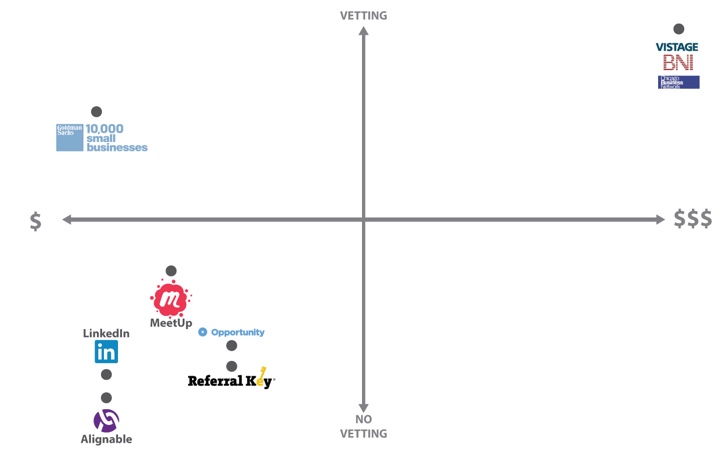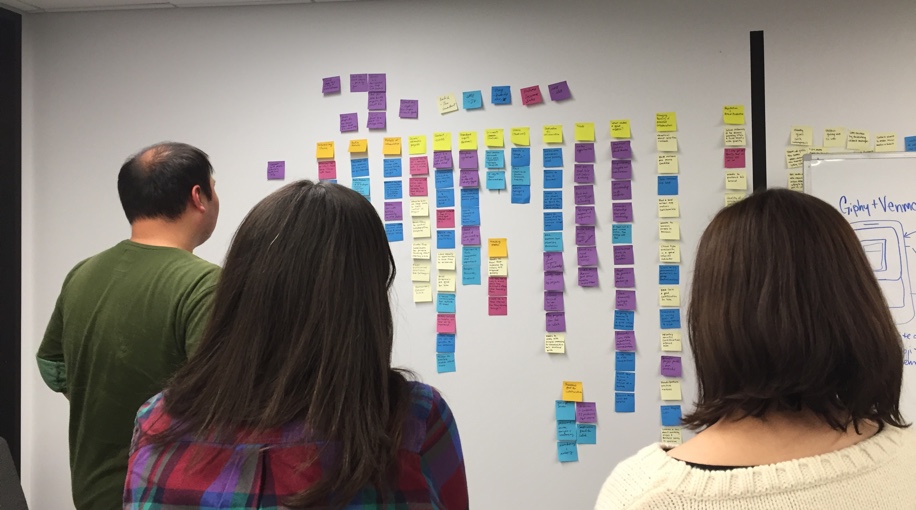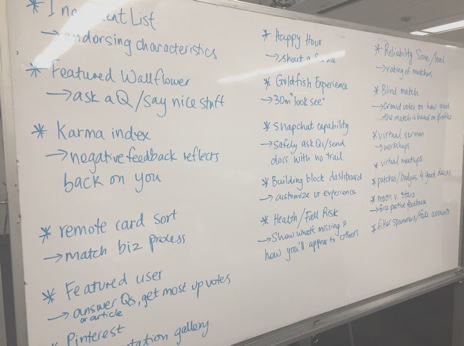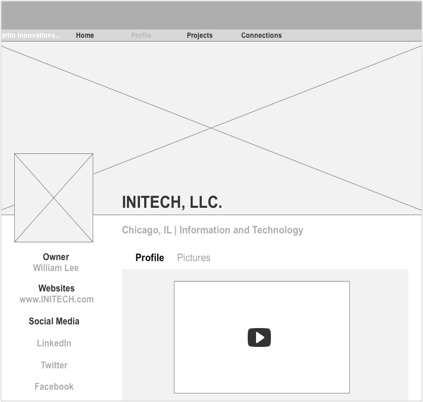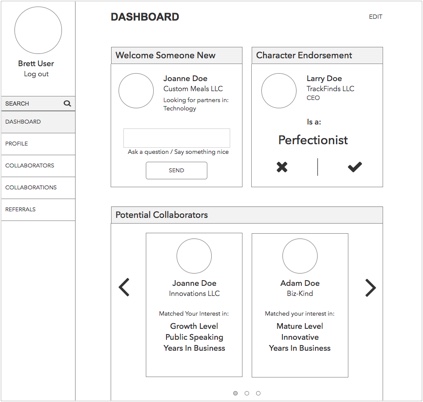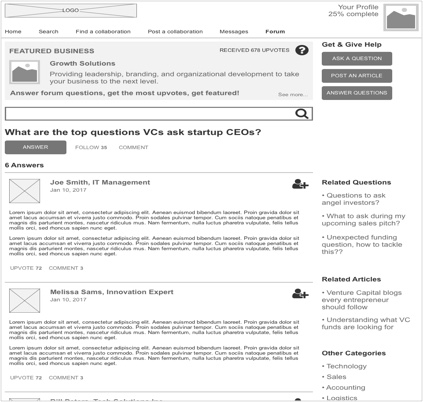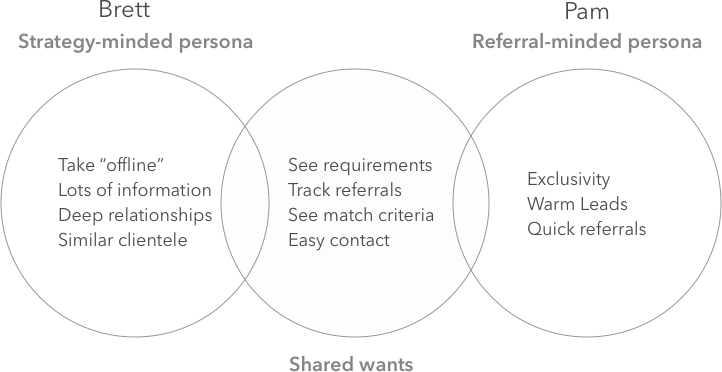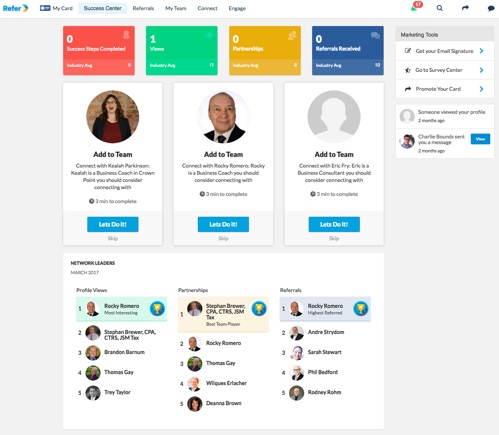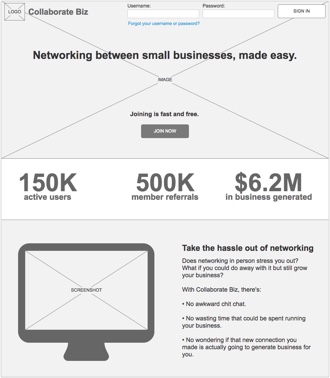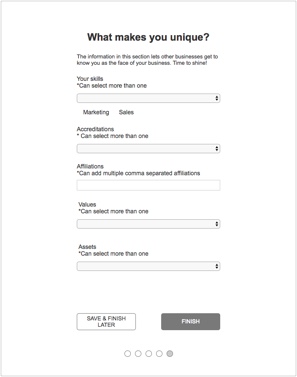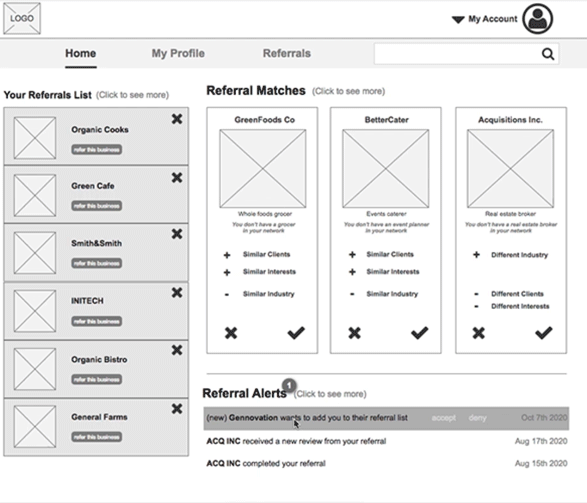1.0 starting research
Before delving into user research we looked at the current state of the project. In our initial assessment of Collaborate.biz we theorized that the onboarding might be too long.
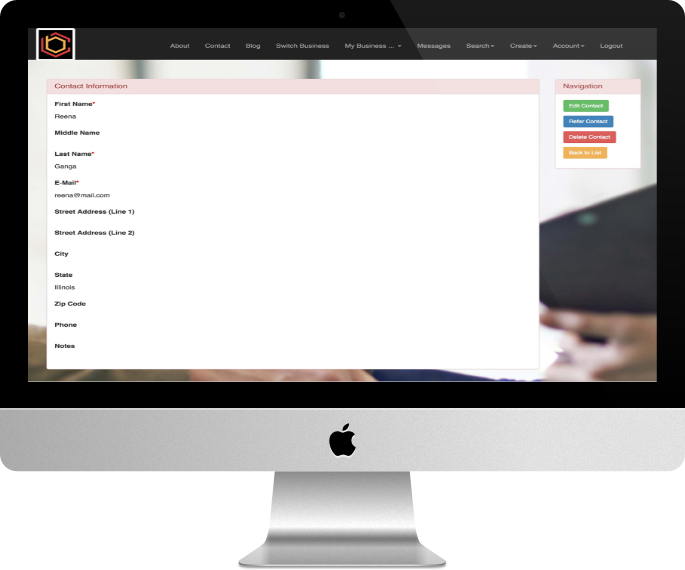
It takes a lot of information to get a picture of how a business aligns with another, but a long scrolling list of text fields and inputs is off-putting. I was skeptical that users would take part without seeing examples of business matches. We assumed users would want to judge the quality of matches for themselves.

